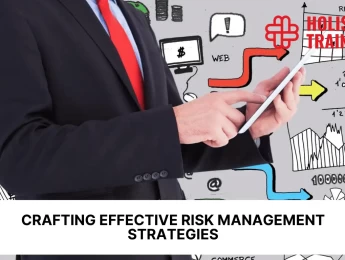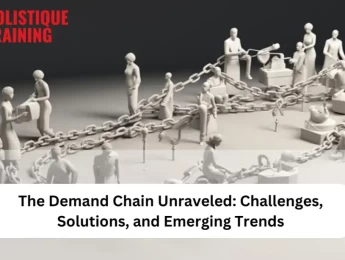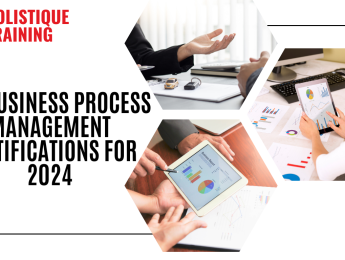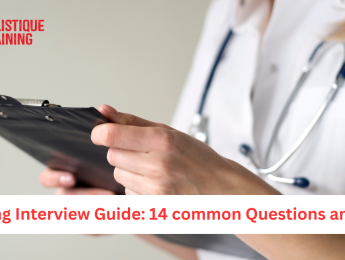In the dynamic landscape of today's business environment, effective risk management stands as a cornerstone for organizational success and resilience. This article delves into the intricate world of risk management, unraveling the strategies that organizations deploy to identify, assess, and mitigate risks. From the encompassing "Risk All Strategy," consolidating risks for a holistic overview, to the targeted "One Risk Strategy," addressing risks individually, we embark on a journey to understand the merits and challenges of each approach. Balancing operational efficiency with nuanced specificity becomes a central theme, requiring organizations to adapt strategies in alignment with their priorities and the ever-evolving risk landscape. Join us as we navigate the complexities of risk management, exploring the diverse strategies that empower organizations to make informed and resilient decisions in the face of uncertainties.
About Risk Management
Risk management is a systematic process of identifying, assessing, and mitigating risks to achieve organizational objectives and enhance decision-making. Different strategies are employed to handle various types of risks that organizations may encounter.
Key Risk Management Strategies:
- Risk Avoidance:
- This strategy involves steering clear of activities or situations that could pose a risk. By avoiding certain actions, organizations minimize the potential negative impacts associated with those activities.
- Risk Reduction or Mitigation:
- Organizations often implement measures to reduce the likelihood or impact of identified risks. This could involve enhancing security protocols, implementing safety measures, or diversifying investments to spread financial risk.
- Risk Transfer:
- Transferring risk involves shifting the potential negative consequences of a risk to another party. This is commonly done through insurance policies or outsourcing certain activities to external partners who assume responsibility for specific risks.
- Risk Acceptance:
- Sometimes, organizations choose to accept certain risks if the potential impact is deemed manageable or if the cost of mitigating the risk outweighs the benefits. This is a strategic decision based on a thorough assessment of the risk and its potential consequences.
- Contingency Planning:
- Developing contingency plans involves preparing for potential risks by outlining specific actions to be taken if those risks materialize. This ensures a swift and effective response to minimize damage and disruption.
- Scenario Analysis:
- Organizations conduct scenario analysis to anticipate and plan for a range of potential future events. By considering different scenarios and their associated risks, organizations can develop strategies to adapt and respond to changing circumstances.
- Continuous Monitoring and Evaluation:
- Effective risk management is an ongoing process that requires continuous monitoring and evaluation. Regular assessments help organizations stay vigilant to emerging risks and adjust their strategies accordingly.
- Crisis Management:
- Having a well-defined crisis management plan is crucial. This strategy involves establishing protocols and procedures to be followed in the event of a crisis, enabling the organization to respond swiftly and effectively to minimize damage.
- Compliance and Regulatory Strategies:
- Organizations must adhere to various regulations and compliance standards. Implementing strategies to ensure compliance with these requirements helps mitigate legal and regulatory risks.
- Investment Diversification:
- In the context of financial risk, diversifying investments across different asset classes can help spread risk and minimize the impact of market fluctuations.
Risk management is a multifaceted process that involves a combination of proactive and reactive strategies. The effectiveness of risk management lies in the organization's ability to identify, analyze, and respond to risks in a dynamic and evolving environment.
What Is the Risk All Strategy?
The term "Risk All Strategy" refers to a risk management approach where an entity, typically a business or investor, opts to consolidate all its risk exposures and vulnerabilities into a single comprehensive strategy. In essence, this strategy entails aggregating and addressing various types of risks, encompassing financial, operational, market, and strategic risks, among others, within a unified framework. The fundamental premise of the Risk All Strategy is that by centralizing risk management efforts, organizations can potentially achieve synergies, streamline decision-making processes, and enhance overall resilience in the face of uncertainties.
This approach involves a comprehensive analysis of an organization's risk profile, identifying and quantifying potential threats, and formulating a consolidated plan to mitigate or leverage these risks. The Risk All Strategy is often associated with a holistic view of risk, acknowledging the interconnectedness of different risk factors and their potential cumulative impact on the organization's objectives. Consequently, organizations embracing this strategy aim to develop a comprehensive understanding of the trade-offs involved in accepting, mitigating, or transferring risk across various business functions.
In a Risk All Strategy, decision-makers assess the potential benefits of concentrating risk management efforts, such as more efficient resource allocation, improved risk visibility, and a better grasp of the organization's risk appetite. This centralized approach allows for a more strategic and cohesive response to emerging risks, fostering a proactive risk management culture within the organization.
However, the Risk All Strategy is not without its challenges. Centralizing risk management may lead to increased complexity, as different types of risks require specialized expertise. Additionally, a one-size-fits-all approach might not be suitable for all risks, and there is a risk of overlooking specific nuances inherent in different risk categories. Balancing the need for comprehensive risk management with the practicalities of implementation becomes crucial.
Implementing a Risk All Strategy necessitates robust risk assessment methodologies, sophisticated data analytics, and strong governance structures. Organizations need to develop a risk-aware culture and foster communication channels that facilitate the sharing of risk-related information across departments.
The Risk All Strategy represents a deliberate and integrated approach to managing the multifaceted landscape of risks facing an organization. While it offers potential advantages in terms of efficiency and cohesiveness, it requires careful consideration of the unique characteristics of different risk types and a commitment to developing a resilient risk management infrastructure. Organizations adopting this strategy should continually reassess and refine their approach in response to evolving risk landscapes and market dynamics.
Key Components of The Risk All Strategy:
- Comprehensive Risk Aggregation:
Integration of financial, operational, market, and strategic risks into a unified framework.
Consolidation of risk exposures to develop a holistic view of the organization's risk profile.
- Synergies and Decision-Making:
Identification of potential synergies through centralized risk management efforts.
Streamlining decision-making processes by addressing interconnected risks collectively.
- Resilience and Risk Mitigation:
Aim to enhance overall organizational resilience in the face of uncertainties.
Development of a consolidated plan to mitigate or leverage identified risks.
- Holistic Risk Analysis:
Comprehensive analysis of the organization's risk profile.
Quantification of potential threats and their cumulative impact on strategic objectives.
- Trade-offs and Risk Appetite:
Evaluation of trade-offs involved in accepting, mitigating, or transferring risk.
Establishment and understanding of the organization's risk appetite.
- Proactive Risk Management:
Promotion of a proactive risk management culture within the organization.
Fostering a strategic and cohesive response to emerging risks.
- Challenges:
Increased complexity due to the need for specialized expertise for different risk types.
Risk of overlooking nuances inherent in specific risk categories.
- Implementation Requirements:
Robust risk assessment methodologies.
Sophisticated data analytics capabilities.
Strong governance structures to support centralized risk management.
- Communication and Collaboration:
Development of communication channels to facilitate the sharing of risk-related information across departments.
Promotion of a risk-aware culture within the organization.
- Continuous Assessment and Refinement:
Ongoing reassessment and refinement of the Risk All Strategy in response to evolving risk landscapes and market dynamics.
Adaptation to changes in the organization's risk profile and strategic objectives.
In summary, the Risk All Strategy involves a comprehensive approach to risk management, encompassing various facets such as aggregation, synergies, resilience, and proactive analysis. However, organizations adopting this strategy must carefully navigate challenges, implement robust methodologies, and foster a culture that supports continuous improvement and adaptability.
What Is the One Risk Strategy?
The Risk One Strategy is a nuanced and specialized approach to risk management that involves addressing each type of risk individually, tailoring mitigation or management strategies to the unique characteristics of specific risk categories. This strategy recognizes the diverse nature of risks faced by organizations and individuals, emphasizing a targeted and in-depth analysis of each risk type.
1. Categorization and Identification:
- Thorough Categorization: Identification and classification of risks into distinct types, such as financial, operational, strategic, and compliance-related risks.
- Granular Analysis: A detailed examination of the unique attributes, triggers, and contributing factors associated with each risk category.
2. Specialized Risk Management Strategies:
- Tailored Approaches: Development of specific risk management plans and mitigation strategies that are tailored to the characteristics of each identified risk.
- Industry-Specific Considerations: Adaptation of risk management strategies to accommodate industry-specific nuances and compliance requirements.
3. Risk Assessment and Prioritization:
- Comprehensive Evaluation: Conducting thorough risk assessments to understand the likelihood and potential impact of each risk.
- Priority Setting: Prioritizing risks based on their significance to organizational objectives, potential consequences, and time sensitivity.
4. Flexibility and Adaptability:
- Dynamic Responses: Emphasis on flexibility to adapt strategies dynamically in response to changes in the risk landscape, market conditions, or organizational priorities.
- Continuous Monitoring: Ongoing monitoring of risks to identify emerging threats and opportunities for refinement.
5. Risk Tolerance and Appetite:
- Setting Tolerance Levels: Establishment of specific risk tolerance levels for each risk category, aligning with the organization's overall risk appetite.
- Integration with Objectives: Ensuring that risk management efforts are congruent with broader business objectives and strategic goals.
6. In-Depth Analysis for Each Risk Type:
- Root Cause Analysis: Conducting a comprehensive analysis to understand the root causes, triggers, and contributing factors for each risk type.
- Cross-Functional Understanding: Facilitating a cross-functional understanding of risks, involving different departments and stakeholders in the analysis process.
7. Comprehensive Reporting:
- Transparent Communication: Generating comprehensive reports that communicate the status of each risk category transparently to internal and external stakeholders.
- Documentation of Efforts: Detailing risk exposures, mitigation efforts, and any emerging concerns in a manner that facilitates clear communication.
8. Continuous Monitoring and Evaluation:
- Proactive Monitoring: Establishing mechanisms for continuous monitoring of risks and mitigation efforts.
- Regular Evaluation: Conducting regular evaluations to assess the effectiveness of risk management strategies for each category and making adjustments as necessary.
9. Industry-Specific Considerations:
- Adaptation to Industry Landscape: Recognizing and adapting to industry-specific risk factors, regulatory requirements, and best practices.
- Benchmarking: Engaging in benchmarking activities to ensure that the Risk One Strategy aligns with industry standards and evolves with industry trends.
10. Challenges and Mitigation:
- Fragmentation Management: Addressing the potential fragmentation of risk management efforts through effective coordination and communication.
- Expertise Development: Developing expertise in diverse risk management approaches and ensuring that teams are adequately equipped to handle specialized strategies.
In conclusion, the Risk One Strategy is characterized by its meticulous attention to detail, flexibility, and a comprehensive approach to each risk category. Organizations adopting this strategy must navigate challenges while leveraging the benefits of tailored, context-specific risk management to enhance overall resilience and strategic agility. The success of the Risk One Strategy hinges on continuous monitoring, adaptability, and integration with broader organizational objectives.
Key Components of The One Risk Strategy:
The "One Risk Strategy" is a comprehensive approach to risk management that involves consolidating various types of risks into a unified framework. It contrasts with strategies that address each risk individually, seeking to provide a holistic view of an organization's risk exposure.
1. Comprehensive Risk Aggregation:
- Unified Framework: Integration of different risk categories (e.g., financial, operational, strategic) into a single, comprehensive risk management framework.
- Holistic Assessment: Viewing risks as interconnected and understanding their potential cumulative impact on the organization.
2. Synergies in Risk Management:
- Efficient Resource Allocation: Identifying synergies across different risk types, allowing for more efficient allocation of resources to manage risks collectively.
- Streamlined Decision-Making: Providing a cohesive and streamlined decision-making process by addressing interconnected risks collectively.
3. Governance and Oversight:
- Centralized Governance: Establishing centralized governance structures to oversee the implementation of the One Risk Strategy.
- Standardized Policies: Developing standardized risk management policies and procedures to ensure consistency across the organization.
4. Risk Assessment and Identification:
- Comprehensive Analysis: Conducting a thorough analysis of the organization's risk profile, identifying and categorizing potential risks.
- Quantitative and Qualitative Assessment: Employing both quantitative and qualitative methods to assess the likelihood and impact of identified risks.
5. Mitigation Strategies:
- Integrated Mitigation Plans: Developing integrated mitigation plans that address multiple risks simultaneously.
- Holistic Risk Response: Formulating response strategies that consider the interconnected nature of risks, providing a more holistic risk management approach.
6. Technology Integration:
- Advanced Analytics: Utilizing advanced analytics and technology solutions to integrate data from various sources for a more comprehensive risk analysis.
- Risk Management Platforms: Implementing centralized risk management platforms that facilitate efficient data processing and decision support.
7. Continuous Monitoring and Reporting:
- Real-Time Monitoring: Implementing continuous monitoring mechanisms to track changes in risk exposure in real-time.
- Comprehensive Reporting: Generating comprehensive reports that provide insights into the overall risk landscape, trends, and the effectiveness of mitigation strategies.
8. Communication and Transparency:
- Stakeholder Communication: Establishing effective communication channels to keep stakeholders informed about the organization's risk exposure and mitigation efforts.
- Transparency: Fostering a culture of transparency regarding the organization's risk management practices.
9. Adaptability to Change:
- Flexibility: Building flexibility into the strategy to adapt to changes in the business environment, regulatory landscape, or emerging risks.
- Scenario Planning: Incorporating scenario planning to assess the impact of potential changes on the organization's risk profile.
10. Alignment with Business Objectives:
- Strategic Alignment: Ensuring that the One Risk Strategy aligns with the broader business objectives and supports the organization's mission and goals.
- Risk-Informed Decision-Making: Integrating risk considerations into strategic decision-making processes.
11. Employee Training and Awareness:
- Training Programs: Implementing training programs to enhance employees' understanding of the One Risk Strategy and their role in its successful implementation.
- Cultural Integration: Fostering a risk-aware culture where employees recognize and actively participate in managing risks.
12. Regulatory Compliance:
- Understanding Regulations: Staying abreast of regulatory requirements and ensuring that the One Risk Strategy aligns with applicable laws and industry standards.
- Regular Audits: Conducting regular audits to assess compliance with established risk management protocols.
In summary, the One Risk Strategy is characterized by its holistic and integrated approach to risk management. By consolidating risks into a unified framework, organizations can gain a more comprehensive understanding of their risk exposure and develop more effective mitigation strategies. The success of the strategy relies on governance, continuous monitoring, adaptability, and a strong alignment with business objectives.
Risk All vs. One: Key Differences
The "Risk All" and "One" risk management strategies represent distinct approaches in addressing and mitigating risks within organizations. These strategies differ in their fundamental philosophies, methodologies, and how they handle the complexity of the risk landscape. Here are the key differences between the two:
1. Comprehensive vs. Specialized Focus:
- Risk All Strategy:
- Approach: Takes a holistic approach by consolidating all types of risks into a unified framework.
- Focus: Addresses various risks collectively, aiming for a comprehensive and interconnected understanding of the risk landscape.
- One Risk Strategy:
- Approach: Takes a specialized approach by addressing each type of risk individually.
- Focus: Tailors risk management strategies to the unique characteristics and challenges of specific risk categories, ensuring a more targeted response.
2. Integration of Risk Management Efforts:
- Risk All Strategy:
- Integration: Centralizes risk management efforts, promoting a cohesive and centralized strategy.
- Synergies: Aims to identify synergies between different types of risks and streamline decision-making processes.
- One Risk Strategy:
- Specialization: Acknowledges the need for specialized attention to individual risks, potentially leading to decentralized risk management efforts.
- Individualized Strategies: Tailors strategies to each risk type, allowing for in-depth analysis and responses.
3. Flexibility and Adaptability:
- Risk All Strategy:
- Adaptability: Requires flexibility to adapt to dynamic changes in the risk landscape.
- Holistic Monitoring: Involves continuous monitoring to identify emerging risks and adjust the overall strategy accordingly.
- One Risk Strategy:
- Dynamic Responses: Emphasizes the ability to dynamically adjust strategies for each specific risk type.
- Granular Monitoring: Requires ongoing, granular monitoring of individual risks, enabling more precise adjustments.
4. Complexity and Coordination:
- Risk All Strategy:
- Coordination: Involves coordinating efforts across various risk types, potentially leading to increased complexity.
- Resource Allocation: Requires sufficient resources and expertise to manage a comprehensive risk framework.
- One Risk Strategy:
- Coordination Complexity: Faces challenges in coordinating and monitoring multiple, specialized risk management strategies.
- Resource Intensity: May require specific expertise for each risk type, potentially demanding more resources.
5. Industry Suitability:
- Risk All Strategy:
- Applicability: May be suitable for industries with interconnected risks where a unified approach provides advantages.
- Interconnected Sectors: Effective for businesses where risks span multiple sectors and are interrelated.
- One Risk Strategy:
- Industry Specificity: May be more suitable for industries where risks are diverse, distinct, and require specialized attention.
- Sector-Specific Approaches: Effective for organizations facing unique risks in different sectors that demand individualized strategies.
The key differences between the Risk All and One Risk Strategies lie in their overall philosophies, the level of integration in risk management efforts, adaptability to change, coordination complexity, and suitability for specific industries. The choice between these strategies depends on the nature of the risks faced, organizational preferences, and the desired balance between comprehensive understanding and specialized responses.
Table 1: Comparison between Risk All & One Risk strategy
Aspect | Risk All Strategy | One Risk Strategy |
Focus | Holistic approach, addressing all risks collectively | Specialized approach, addressing each risk individually |
Integration of Efforts | Centralized risk management efforts | Decentralized risk management efforts |
Flexibility and Adaptability | Requires flexibility to adapt to dynamic changes | Emphasizes dynamic adjustments for specific risks |
Complexity and Coordination | Involves coordination across various risk types | Faces challenges in coordinating multiple strategies |
Resource Allocation | May require significant resources and expertise | May demand specific expertise for each risk type |
Industry Suitability | Suitable for industries with interconnected risks | More suitable for industries with diverse and distinct risks |
Risk Monitoring | Continuous monitoring to identify emerging risks | Granular monitoring of individual risks |
Advantages and Disadvantages of Each Approach
Advantages:
- Comprehensive Understanding:
- Pro: Offers a holistic view by addressing all risks collectively, allowing for a comprehensive understanding of the interconnected nature of risks.
- Synergy Identification:
- Pro: Facilitates the identification of synergies between different types of risks, enabling organizations to streamline decision-making processes.
- Resource Efficiency:
- Pro: May lead to more efficient resource allocation, as centralized efforts can potentially reduce redundancy and optimize resource utilization.
- Integrated Response:
- Pro: Promotes a unified and integrated response to risks, ensuring a coordinated approach that aligns with the overall business strategy.
Disadvantages:
- Coordination Complexity:
- Con: Involves coordination complexities, as managing various risk types collectively can be challenging and require effective communication channels.
- Risk Oversights:
- Con: There's a risk of oversights, as a comprehensive strategy might not delve into the specific nuances of individual risk categories.
- Resource Intensiveness:
- Con: Requires significant resources and expertise to manage a comprehensive risk framework, potentially increasing the cost of risk management.
Advantages:
- Specialized Attention:
- Pro: Allows for specialized attention to individual risk types, tailoring strategies to the unique characteristics and challenges of specific risks.
- In-Depth Analysis:
- Pro: Facilitates in-depth analysis of each risk category, promoting a nuanced understanding of root causes, triggers, and contributing factors.
- Flexibility in Responses:
- Pro: Provides flexibility to dynamically adjust strategies for each specific risk, allowing for more precise and adaptive responses.
- Resource Optimization:
- Pro: May optimize resources by focusing expertise on specific risk domains, potentially increasing the efficiency of risk management efforts.
Disadvantages:
- Coordination Challenges:
- Con: Faces challenges in coordinating and monitoring multiple, specialized risk management strategies, potentially leading to coordination gaps.
- Lack of Holistic View:
- Con: May lack a holistic view of the overall risk landscape, potentially resulting in a fragmented approach to risk management.
- Increased Complexity:
- Con: The need for expertise in various risk domains may increase the complexity of managing diverse and specialized risk strategies.
Considerations for Both Approaches:
- Industry Specificity:
- Note: The suitability of either approach may depend on the industry, with interconnected sectors favoring a Risk All Strategy and industries with diverse risks favoring a One Risk Strategy.
- Risk Tolerance and Objectives:
- Note: Organizations need to align their chosen strategy with their risk tolerance levels and overarching business objectives.
- Dynamic Environments:
- Note: Dynamic environments may influence the choice between strategies, with rapidly changing conditions favoring adaptability in both approaches.
The choice between the Risk All and One Risk Strategies involves a careful consideration of organizational priorities, industry-specific factors, and the nature of risks faced. Both approaches have their advantages and disadvantages, and the decision should be informed by the unique characteristics and goals of the organization.
Conclusion
In summary, robust risk management, employing strategies such as avoidance and acceptance, is vital for organizational success. The "Risk All Strategy" consolidates risks holistically, while the "One Risk Strategy" addresses risks individually. Both strategies offer advantages and challenges, demanding a careful balance between efficiency and specificity. Organizations must align their chosen approach with priorities and the dynamic risk landscape for resilient decision-making.In essence, the efficacy of risk management hinges on an organization's ability to perpetually identify, analyze, and respond to risks within an adaptive and dynamic environment. It demands an unwavering commitment to continual assessment, adaptability, and seamless integration with broader business objectives. Whether opting for the overarching Risk All Strategy or the targeted One Risk Strategy, organizations must strike a delicate balance between operational efficiency and granular specificity, always striving to fortify resilience and strategic agility in the face of unpredictable uncertainties.

























